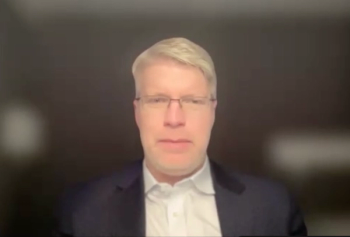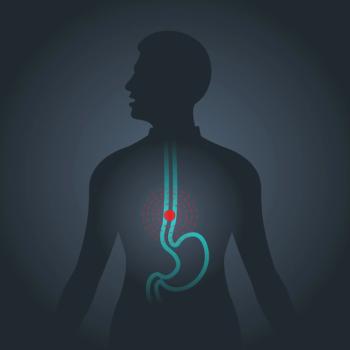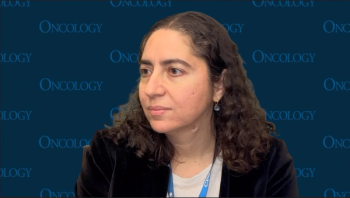
Halt in Production of Codman Pump Leaves Questions
MSKCC’s Dr. Nancy Kemeny discusses the impact of a company's decision to halt manufacture of a pump used to treat liver mets from colon and rectal cancers.
We spoke with Dr. Nancy E. Kemeny, a medical oncologist who specializes in the treatment of colon and rectal cancers at the Memorial Sloan Kettering Cancer Center in New York City, about a device that helps deliver chemotherapy directly to the liver for patients with liver metastases. The manufacturer of this pump is stopping its production for good, with serious implications for patient care.
-Interviewed by Anna Azvolinsky
Cancer Network: Can you tell us about this medical device, called a Codman pump, that you used often in your practice. For which patients is this appropriate and what’s the evidence that it benefits cancer patients?
Dr. Kemeny: To understand why this is useful, you have to understand that the liver is perfused by two arteries, the hepatic artery and the portal vein. The tumors get their blood supply from the hepatic artery. So, if you can give drugs right into the hepatic artery, you would be giving them right to the tumors. What the pump allows us to do, is to give continuous infusions into the liver. You can fill it and have continuous infusions into the liver for about 2 weeks, and then we empty it and put saline in it. The pump is a very nice device by which we can get a long, slow infusion of drugs into the liver.
This is very helpful and we have done a number of randomized studies to show that. The first randomized study was done by the CALGB, and they randomized colon cancer patients with liver metastases to either one drug, given using the pump-FUDR (floxuridine), versus standard 5-fluorouracil (5-FU) plus leucovorin, which were the drugs appropriate at the time the study was done.
What the results showed is that there was a 24-month survival in the group that received the single drug through the pump, which was a significantly higher survival compared to the group that received the systemic chemotherapy combination.
We went on at Memorial Sloan Kettering to use the FUDR given by the pump, because when you give that drug through the pump, you get no systemic side effects; its all going right to the liver. So you can combine that with systemic chemotherapy, which we did. In our first study here, we had an extremely high response rate and survival. For advanced colon cancer patients with liver metastases who we were treated in the frontline, who had received no prior chemotherapy, our median survival was 50 months.
That is one place we use it and in using it like that, we sometimes get patients with a lot of liver metastases that surgeons cannot remove. But if we treat patients using this pump, we can get the metastases small enough that sometimes we can resect the tumor. This is great, because once we can get the tumors out of these livers, these patients can live for a long time.
That is our aim in the patients we consider nonresectable. Then there is another group of patients who come to us because they have a few metastases that can be resected and in that group of patients, we use the pump to help us not see a recurrence again. Because most of the time when you resect from the liver, you will see tumors come back in the liver.
In that group of patients who received drug via the pump, we saw hepatic progression–free survival-in other words, the chance that they would recur in the liver-was very small compared to patients who received systemic therapy. The median hepatic progression–free survival was twice as long in the patients who received drug by the pump compared to those who received systemic therapy. So, we showed that using the pump could control recurrence, and that [Cancer and Leukemia Group B (CALGB) study] was published in the New England Journal of Medicine many years ago.
Since then, we have done further studies in the adjuvant setting, after liver resection. If we look at our newer patients who are operated on, after 2003 we have about an 87% [rate of] 5-year survival, which is really excellent. These are patients who had metastatic disease to the liver, who have their liver resected and then receive a pump-based chemotherapy and systemic therapy.
We also wrote a newer article on 2,375 patients at Memorial Sloan Kettering who had received a liver resection here for liver metastases. We compared the group that had received the pump and those that did not, and the group who had the pump were worse-prognosis patients where the surgeons thought that they may recur faster and [who] had more lymph node involvement and more tumors. Even though they had a worse prognosis, they survived 2 years longer than the other group! To emphasize what that means, there are expensive cancer drugs that are approved in the US that increase the median survival by 1 month, and just giving an inexpensive chemotherapy with this pump improved survival by 2 years. That is a tremendously large improvement in survival!
We have many patients who come to Memorial Sloan Kettering who want this kind of treatment-and there are more and more centers that want to use this pump, so I have trained 20 centers; and now, as these centers are opening these pump programs, suddenly we have a shortage of pumps.
Cancer Network: Are there other types of tumors that are also treated using this liver-directed pump?
Dr. Kemeny: Yes, there is a tumor type called cholangiocarcinoma, which is rarer, not as common as colon cancer. It results in the cells within the bile ducts, both inside and outside the liver. It is a bad, aggressive disease. The usual survival is about 11 months. We have 3 studies now with our pump patients that show that they live 30 months, so their survival is much longer than the same patients treated with systemic therapy. We have another group of patients, with cholangiocarcinoma, who also want to come here to be infused using this pump.
Cancer Network: Now the manufacturer has decided to stop making this pump, correct? Is there a chance that they would reconsider?
Dr. Kemeny: So now, yes, the company (Cerenovus, a subsidiary of Johnson & Johnson) that manufacturers the pump told me that they are not making it anymore. They are telling me no, they will not make this pump. Since all of this happened, I have a number of patients whose relatives have pumps and some…have asked if they could buy the pump from the manufacturer. So I asked the company and they [said] “no.” Back in April when this first came about, initially [the company] told me that not only could I not have the pump, but that I also could not have the [associated] catheters.
Cancer Network: Are there other possible alternative pumps that could perform a similar function for patients with liver metastases? Or is this really a singular type of device?
Dr. Kemeny: There is another [one], called the Medtronic pump, and it’s approved for giving pain medicine and not really used for hepatic treatment. But it’s a similar type of continuous-infusion pump that’s similar to the Codman pump we use. The only difference with the Medtronic pump is that it has to be programmed using a computer.
You need to put in a computer hand device over the pump and program it to work. In contrast, the Codman pump just needs to be filled, and it works without any programming. So, that is a problem for patients. For us here at Memorial Sloan Kettering, I can teach our nurses how to do it. We can have a computer here and can do it, but right now I have patients from all over the country who are asking their doctors to empty the pump because that helps the patient. They come here to get the pump initially, but then their local doctor can help with emptying the pump.
Now I have to tell these doctors that they need to program this pump, and many of them may not want to do that. It’s a more complicated [procedure] thing and they may not want to be responsible for it.
This is where we are right now. There are also pumps in Europe but they are not approved by the US Food and Drug Administration [FDA]. For some of these small companies outside the US, receiving an FDA approval will cost them a lot of money, so some of them don’t want to enter the US market. But what is not clear to me is why a pump that was working great here, why we can’t have this, why can’t someone else make it if this company no longer wants to? It is approved by the FDA and it works!
Cancer Network: Is there a more recent update on the catheters that you could connect to the Medtronic pump?
Dr. Kemeny: More recently, the company, Cerenovus, [was] telling me that they can give [the catheters] to me, and so I have catheters to connect to the Medtronic pump. But when they first told me this, they literally were closing my program and everyone else’s because they told us that we were getting neither the catheters nor the pumps. Now, with the catheters, we are not closed down, but we do have problems. [At least] for the patients, there is an alternative for now.
Cancer Network: How rare is this type of event where a vital drug or device for cancer patients is taken off the market? Have you had a similar experience previously?
Dr. Kemeny: There are not that many devices, so you see this [happen] more with drugs. The first experience I had like this was the drug we use, FUDR. Remember [that] I mentioned this CALGB study.
During that study, the company that made the drug, Roche, said that they wouldn’t make it anymore, we are not making any money from it. And the reason they weren’t making any money from it is that it was a very cheap drug. But, fortunately, I was able to get a pharmacy to make it so I didn’t lose the drug or the trial. It’s still a very cheap drug compared to many newer drugs. And that is the problem with the pump, it is cheap. You put it in and can last for years so the patient is not, in a sense, [paying] a lot for the treatment.
Newsletter
Stay up to date on recent advances in the multidisciplinary approach to cancer.


















































































